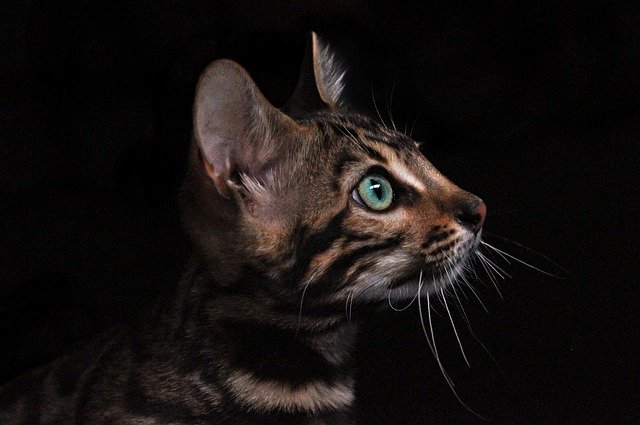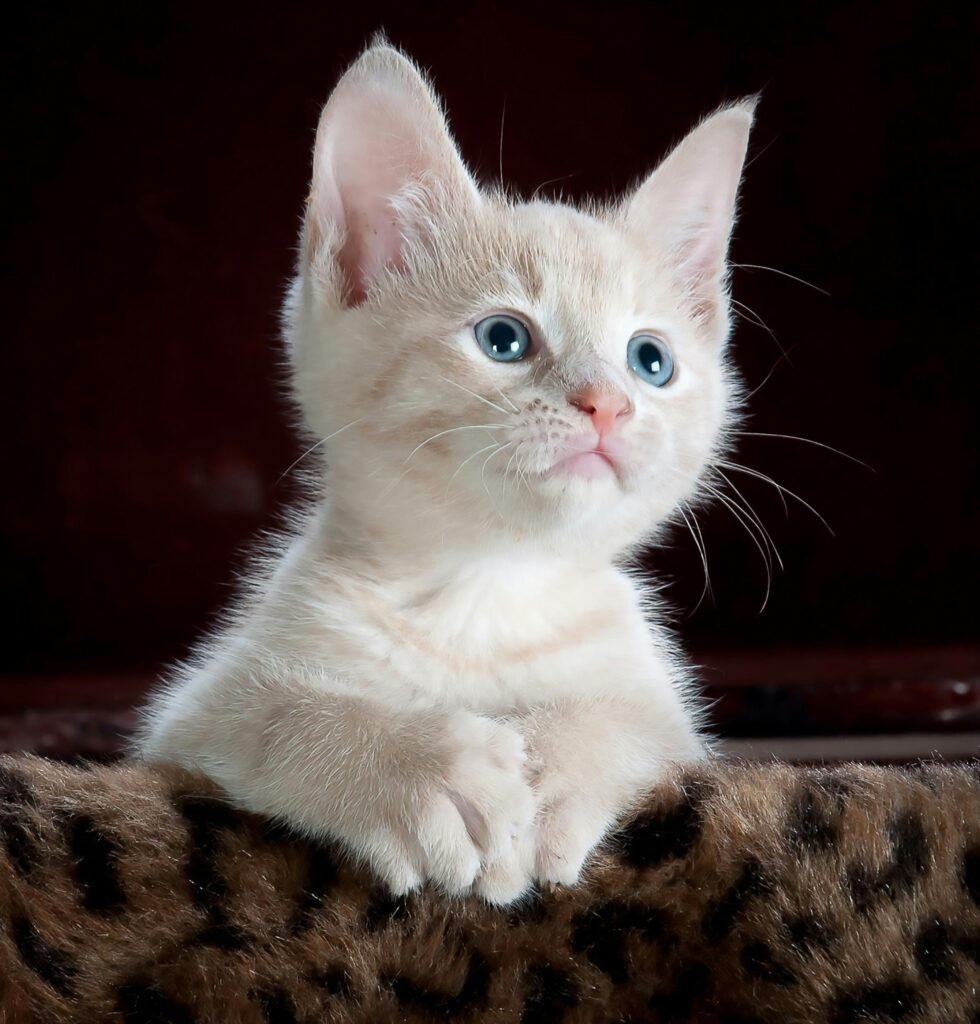BENGAL CAT
HEALTH

How to Keep a Bengal Cat in Good Health _
To promote the health of your Bengal cat, it’s essential to provide an optimal environment for their development. Whether you have a pet Bengal or a breeder in a breeding program, all Bengal cats share similar needs for maintaining good health:
- A nutritious diet
- A clean, stimulating environment
- Access to sunlight
- Time to move and play
- Positive interaction with humans
- Minimal stress sources


PREVENT DISEASES, VIRUSES AND PARASITES
Another critical aspect of Bengal cat care is preventing health issues such as diseases, viruses, and intestinal parasites. Like all cat breeds, Bengals have certain health vulnerabilities.
One example is HCM (hypertrophic cardiomyopathy), a heart condition that affects many Bengal bloodlines and other cat breeds worldwide. Tragically, this condition can lead to death. Since it’s hereditary, testing breeding cats before pairing them can help avoid passing it on to future generations.
Breeders should test their breeding Bengal cats for hereditary and viral health issues to enhance the overall health of the feline population.
If you adopt a Bengal kitten as a companion, you typically won’t need these tests unless the kitten falls ill. Opting for a reputable breeder can spare you a lot of trouble down the road.
At Wild N Sweet Bengals, health is a top priority. We do everything we can to keep our Bengal cats and kittens healthy. All Bengal kittens adopted from our cattery come with a full health guarantee.
We also support PROJETS O’POIL, a non-profit organization that helps stray cats in need, giving them a second chance and contributing to their overall health and well-being. Learn More
We are proud to announce that our cattery has tested negative for the following diseases and parasites:
- HCM (hypertrophic cardiomyopathy)
- FIV/FeLV (feline immunodeficiency virus/feline leukemia virus)
- PK-deficiency (anemia)
- PRA-b (progressive retinal atrophy)
- Trichomonas (intestinal parasite)
- Giardia (intestinal parasite)
- Coccidiosis (intestinal parasite)
These health tests can be quite costly, which may be one reason why some Bengal cat breeders neglect them. Lack of knowledge is another factor. To assist others in improving the health of their Bengal cats, we’ve compiled a brief guide on how to conduct these tests. Sharing this information could make a significant impact.
How are these diseases or parasites detected?
PK-deficiency (anemia) and PRA-b (progressive retinal atrophy) tests are conducted genetically in a lab. To perform the tests, take a saliva sample from your cat using a cotton swab and send it to UC Davis Genetics Laboratory for analysis. This method is also used to test Bengal cat color genes.
FIV/FeLV (feline immunodeficiency virus/feline leukemia virus) are viral diseases that can sometimes be fatal. These are tested by taking a blood sample at your veterinary clinic.
Intestinal parasites such as Tritrichomonas, Giardia, and Coccidiosis can also be viral. A PCR test is performed on a stool sample in a lab through your veterinarian.
HCM (hypertrophic cardiomyopathy) in Bengal cats is detectable only by a specialized cardiologist who conducts a cardiac ultrasound.
Here is a summary of these health issues: diseases, viruses and intestinal parasites.

FELINE IMMUNODEFICIENCY VIRUS (FIV)
The feline immunodeficiency virus (FIV) impairs the body’s ability to mount a normal immune response. As a result, infected Bengal cats are more susceptible to certain types of cancers and other infections that can impact their health. However, despite being infected, some cats may remain symptom-free and live a normal lifespan.
FELINE LEUKEMIA VIRUS INFECTION (FELV)
Feline leukemia virus (FeLV) is a disease that compromises the health of Bengal cats by weakening the immune system and causing certain types of cancer. This viral infection is a leading cause of death in domestic cats across all breeds. Despite the presence of the virus, some infected cats may not show any symptoms and can maintain a normal lifespan.
PYRUVATE KINASE DEFICIENCY (PK-DEF)
Pyruvate kinase deficiency is a genetic health issue in Bengal cats. Pyruvate kinase is a crucial enzyme in the energy metabolism of red blood cells. A deficiency in this enzyme can lead to anemia.
This condition is inherited as a recessive gene, meaning only cats with two copies of the defective gene will experience health issues. Carrier Bengal cats are healthy but can pass the defective gene to their offspring.
BENGAL PROGRESSIVE RETINAL ATROPHY (PRA-B)
Bengal progressive retinal atrophy (PRA-b) is a genetic condition that leads to recessive blindness in Bengal cats. This disease affects the health of the eyes by causing the destruction of cells that detect light. Cell loss typically begins around 7 weeks of age and progresses slowly, compromising the cat’s vision by around 2 years old. However, the rate at which blindness develops can vary.
HYPERTROPHIC CARDIOMYOPATHY (HCM)
Hypertrophic cardiomyopathy (HCM) is a relatively common inherited heart condition that affects Bengal cats. It causes thickening of the heart muscle, forcing the heart to work harder and leading to various health issues. Blood clots or thrombosis can form, potentially causing paralysis in the back legs. This significant health problem can also lead to heart failure, which may be fatal. Early signs of HCM in Bengal cats include shortness of breath and excessive fatigue.
FELINE INFECTIOUS PERITONITIS (FIP)
Feline infectious peritonitis (FIP) is a viral disease that affects the health of Bengals and other domestic cats. It is caused by a mutation of a virus known as coronavirus, which typically targets the cells of the intestinal wall. FIP can manifest in two forms: “wet” and “dry.” Both forms present symptoms such as fever, anorexia, weight loss, and lethargy.
Fortunately, FIP is a rare condition; only 3% of cats with coronavirus will develop the disease. While 10-40% of cats carry coronavirus, the virus itself is not problematic unless it mutates into FIP. It’s important to distinguish between the two scenarios. Many cats with coronavirus remain asymptomatic.
TRITRICHOMONAS FOETUS INFECTION IN CATS
Trichomonas foetus (T. foetus) is a single-celled protozoan that resides in the colon of Bengal cats. Symptoms include diarrhea and persistent foul-smelling stools, sometimes mixed with blood or mucus. This condition is viral and transmitted through stool. Kittens are more severely affected by the infection compared to adult Bengal cats.
GIARDIA PARASITIC INFECTION IN CATS
Giardiasis is an intestinal infection caused by the protozoan parasite giardia. This parasite can also impact the health of humans and other animals. Infection can occur through direct or indirect contact with an infected Bengal cat. Infected cats often exhibit soft, greasy diarrhea with a strong odor, sometimes accompanied by excessive mucus.
COCCIDIOSIS PARASITIC INFECTION IN CATS
Coccidiosis is a parasitic infection caused by the Coccidia parasite. This condition poses a significant risk to kittens due to their underdeveloped immune systems. Infected Bengal cats typically experience symptoms such as watery, bloody, or mucous diarrhea, weakness, fever, vomiting, weight loss, and dehydration. This health issue is viral in Bengal cats.
FELINE HERPESVIRUS INFECTION OR FELINE VIRAL RHINOTRACHEITIS IN CATS
Feline viral rhinotracheitis (FVR) is an infectious disease caused by a feline herpes virus that affects the health of Bengal cats. It leads to infections in the upper respiratory tract, nose, and eyes. Although it can infect cats of all ages, it is more common in kittens due to their weaker immune systems. Common symptoms in infected Bengal cats include sneezing, runny nose, eye discharge, and conjunctivitis.
This virus is highly contagious and spreads through direct or indirect contact between cats. A single sneeze from one cat near another can transmit the virus. Cats may also develop the infection after experiencing physical or psychological stress.
To protect the health of our Bengal cats, we vaccinate all our kittens against rhinotracheitis starting at 8 weeks old.
